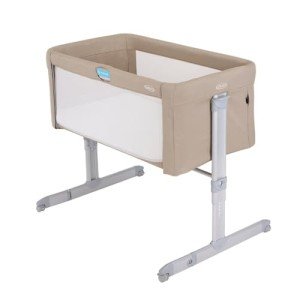Understanding Co-Sleeper Cribs: A Comprehensive Guide for New Parents
In the ever-evolving landscape of infant sleep options, co-sleeper cribs have gathered significant attention amongst new parents. These specialized cribs provide a distinct bridge between co-sleeping and safe sleep practices, providing benefits that resonate with both caregivers and infants. This article looks into the complexities of co-sleeper cribs, describing their features, benefits, considerations, and answering common concerns to assist parents in making a notified decision.
What is a Co-Sleeper Crib?
A co-sleeper crib, likewise called a bedside sleeper, is a kind of crib designed to securely connect or sit next to an adult bed. It permits infants to sleep near their parents without the risks traditionally associated with adult bed-sharing. These cribs come in numerous designs, but most share an essential feature: one side that is lower, allowing easy reach to the baby while keeping them in their own designated sleeping space.
Secret Features of Co-Sleeper Cribs
- Safe Attachment: Designed to firmly connect to the adult bed, making sure stability.
- Adjustable Height: Height modification options for smooth positioning next to the adult mattress.
- Breathable Mesh Sides: Often equipped with breathable mesh sides to improve airflow.
- Compact Design: Takes up less space than conventional cribs, making them perfect for small rooms.
- Portable Options: Many co-sleeper cribs are lightweight or foldable, enabling easy movement and travel.
Benefits of Using a Co-Sleeper Crib
Co-sleeper cribs present a number of advantages that appeal to new parents, consisting of:
- Enhanced Bonding: Proximity promotes bonding and can relieve nighttime feedings and reassuring.
- Simplified Nighttime Feeding: Parents can quickly feed or soothe their baby without needing to get out of bed.
- Reduced Risk of Bed-Sharing Hazards: Co-sleepers create a much safer environment than traditional bed-sharing, reducing the threat of suffocation and falls.
- Encouragement of Independent Sleep: Infants have their own sleep space, which promotes independent sleeping practices.
Factors to consider When Choosing a Co-Sleeper Crib
While co-sleeper cribs provide numerous benefits, there are also several considerations that parents ought to evaluate before purchasing:
- Safety Standards: Always guarantee that the crib follows present safety guidelines provided by organizations such as the Consumer Product Safety Commission (CPSC).
- Size Compatibility: Measure the adult bed to ensure the co-sleeper will fit safely and conveniently together with it.
- Reduce of Use: Look for designs that assist in easy operation and ease of access, specifically throughout nighttime.
- Convertible Options: Some co-sleepers offer the flexibility to transform into a conventional crib once the child outgrows them, which can be an economical option.
Top Co-Sleeper Cribs on the marketplace
To assist browse the abundance of choices available, here's a table showcasing some popular co-sleeper cribs in addition to their standout features:
| Brand | Design | Functions | Rate Range |
|---|---|---|---|
| Arm's Reach | Perfect Arc Crib | Adjustable height, detachable side | ₤ 150 - ₤ 230 |
| Babybay | Initial Co-Sleeper | Made of sustainable wood, consists of bed mattress | ₤ 240 - ₤ 300 |
| Chicco | Next2Me Magic | Easy side access, collapsible design | ₤ 200 - ₤ 280 |
| Snuggle Me | Organic Co-Sleeper | Soft, comfortable shapes; portable | ₤ 120 - ₤ 180 |
| HALO | BassiNest | 360-degree rotating, height-adjustable | ₤ 250 - ₤ 350 |
Tips for Using a Co-Sleeper Crib
- Positioning: Place the co-sleeper next to the bed at the same height level for safety.
- Follow Safe Sleep Practices: Ensure the crib is established according to standards to reduce dangers. This includes avoiding loose bedding and keeping the mattress company.
- Routinely Check Security: Periodically inspect the attachment between the co-sleeper and the adult bed to ensure it stays secure and stable.
Frequently Asked Questions (FAQs)
1. Are co-sleeper cribs safe?Yes, when
utilized according to the maker's instructions and security guidelines, co-sleeper cribs are considered a safe option to conventional bed-sharing.
2. For how long can my baby use a co-sleeper crib?Most co-sleeper cribs are designed for infants up to 5-6 months old, but examine specific product specs for age and weight limits. 3. Do co-sleeper cribs come with mattresses? Cots 4 Tots -sleeper cribs feature included mattresses, but validate this before purchase. Make sure any extra mattress satisfies safety requirements. 4. Can a co-sleeper crib be utilized for twins?There are co-sleeper cribs developed for twins, however these designs might be less common. Always examine the size and weight limitations. 5. Ought to I use a co-sleeper crib for naps?Absolutely! Co-sleepers work well for both nighttime sleeping and naps, supplying a constant sleep environment for infants. Co-sleeper cribs provide an efficient and safe compromise
for new parents eager to keep their infant close while preserving a secure sleeping environment. By understanding their features, benefits, and
security considerations, parents can make informed choices that accommodate their household's needs. Whether you're searching for convenience during nighttime feedings or a way to develop a strong early bond, a co-sleeper crib may just be the ideal option for you and your child.

